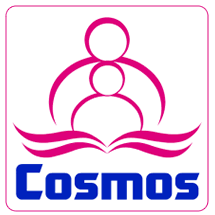AUTHOR GUIDELINES
Layout Guide for Manuscript
In English Journal of Indragiri (EJI): Studies in Education, Literature, and Linguistics
First Author Name1, Second Author Name1
1Institution (author 1), 2Institution (author 2)
Email: 1author _1@abc.ac.id, 2author _2@abc.ac.id
Phone Number: (for communication purpose only not to be published)
[Times New Roman, 12, Bold, Capitalized Each Word, Center, Single Spacing]
Abstract
The abstract should be written in English in one paragraph and should be not more than 300 words. TNR, font size 12, single spacing. Follow the following pattern: General statement about the importance of the topic, gap in literature or discrepancies between theories and practices (problem), purpose of study, method, results / findings, and conclusion / recommendation (IMRaD pattern).
Keywords: Keyword one, keyword two, keyword three, keyword four, keyword five – Times New Roman, 12, single spacing (no more than two lines)
Abstrak
Abstrak harus ditulis dalam bahasa Indonesia dalam satu paragraf dan tidak lebih dari 300 kata. TNR, ukuran font 12, spasi tunggal. Ikuti pola berikut: Pernyataan umum tentang pentingnya topik, kesenjangan literatur atau ketidaksesuaian antara teori dan praktik (masalah), tujuan penelitian, metode, hasil/ temuan, dan kesimpulan/ rekomendasi (pola IMRaD).
Kata Kunci: Kata kunci satu, Kata kunci dua, Kata kunci tiga, Kata kunci 4, Kata kunci 5 – Times New Roman, 12, single spacing (tidak lebih dari dua baris)
INTRODUCTION (Capital Letter, TNR, 12, Bold, 1.5 Spaces)
The main objective of an introduction is to justify the reasons for writing about the issue. The objective of this part is to introduce the issue to the readers, hand over an overview of related findings researches of the issue, and identify your own hypothesis, research, or study. If you introduce and define key words in your abstract, you need to introduce and define them in this section.
The manuscript should be maximally not more than 20 pages length, 1.5 spaces, and 12 point Times New Roman font. Use indentation for each paragraph and do not leave a space between paragraphs. The paragraphs are indented first line 1 cm.
We strongly encourage authors to use this document for the preparation of the camera-ready. Please follow the instructions closely in order to make the volume look as uniform as possible. Please remember that all the papers must be in English and without orthographic errors. Do not add any text to the headers (do not set running heads) and footers, not even page numbers.
The paper size must be set to A4. The document margins must be the following:
Top : 4 cm Bottom : 3 cm
Left : 4 cm Right : 3 cm
Review of theories may be merged into INTRODUCTION
Subheading
The APA 7th edition and reference manager (Mendeley, Zotero, Endnote) must be used for all articles. It is not advised to cite unpublished sources in the article. As example you may consider the citation (Alqahtani, 2015), (Cresswell, 2012), (Gay et al., 2012) Besides that, all references should be cited in the text. No numbers with or without brackets should be used to cite or to list the references.
METHOD [Capital Letter, Times New Roman, 12, Bold]
This part explains the rationale for the application of specific procedures, which includes research design, participants (population and sample), data collection technique, research instrument(s), data analysis technique.
FINDING AND DISCUSSION [Capital Letter, Times New Roman, 12, Bold]
Findings ought to be concise and clear. Instead of presenting facts in great detail, the outcomes should be a summary of (scientific) findings. Describe how your conclusions or findings differ from those reported in earlier studies by other researchers.
The discussion is written to interpret and describe the importance of research findings of the issues being researched, and to explain any new understanding or insights of the problem after the author has taken the findings into consideration. It should connect to the introduction by way of the research questions or hypotheses you posed and the literature you reviewed, but it does not simply repeat or rearrange the introduction.
Tables, graphs, and figures must appear inside the designated margins or they may span the two columns. Tables in two columns must be positioned at the top or bottom of the page within the given margins. Tables, graphs, and figures should be properly numbered, centred and should always have a caption positioned above it. Captions with one line should be centred and if it has more than one line should be set to justified.

CONCLUSION [Capital Letter, Times New Roman, 12, Bold]
The conclusion assists the readers understand why the research should matter to them after they have read the article. It is not only to summarize the primary issues covered or restate the research problem, but also to synthesize the key points and, if applicable, where the author recommends new areas for future research.
REFERENCES (Capital Letter, Times New Roman, 12, Bold, Single space)
The reference format must be followed while writing references. The APA 7th edition and reference manager (Mendeley, Zotero, or others) must be used for all articles. It is not advised to cite unpublished sources in the article. References must mostly come from original sources, such as scientific journal articles that have been published within the last ten years or less, and minimum of fifteen references. Then at least 80% of references are taken from books and scientific publications.
Alqahtani, M. (2015). The importance of vocabulary in language learning and how to be taught. International Journal of Teaching and Education, III(3), 21–34. https://doi.org/10.20472/te.2015.3.3.002
Cresswell, J. W. (2012). Educational Research: Planning, Conducting, and Evaluating Quantitative and Qualitative Research (K. Mason (ed.); Fouth Edit). Pearson Education, Inc.
Gay, L. ., Mills, E. G., & Airasian, P. (2012). Educational Research Competencies for Analysis and Aplications. Pearson Education, Inc.
Appendix
If any, the appendix should appear directly after the references without numbering, and not on a new page.
For journal template click Here



















